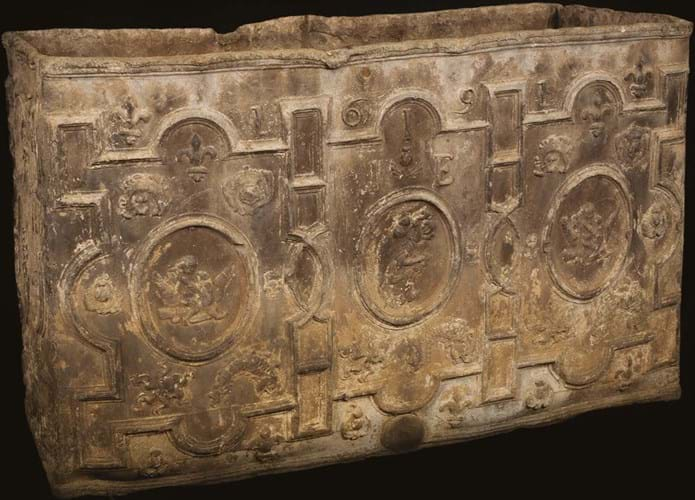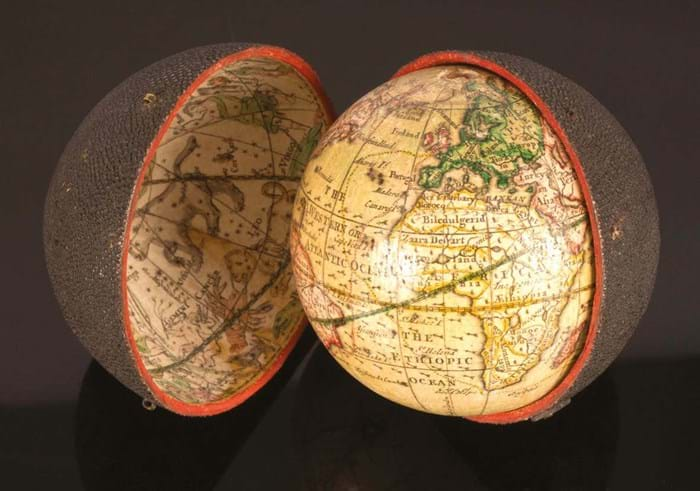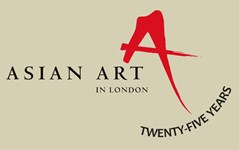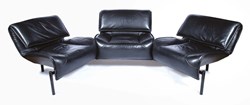Transmuting lead into gold the auctioneer’s way, two 17th century cisterns showed how it’s done at Chorley’s (22.5% buyer’s premium) of Cheltenham.
Period examples of the classic country house ‘garden’ form are increasingly hard to find. Each entered by a Cotswolds vendor, the costlier of the two was a 1691 example.
Measuring 4ft wide x 21in deep x 2ft 6in high (1.2m x 55 x 75cm), it had a geometrically panelled front with three ovals containing cherubs and relief motifs of thistles, fleur de lys and dolphins. To one panelled side were the initials I over IE.
Pitched at £6000-8000, it sold to the UK trade at £13,000.
The next lot, going to the same UK dealer above estimate at £11,000, was a Charles II example. Measuring 3ft 5in (1.04m) wide x 2ft 6in (75cm) deep x 2ft 8in (80cm) high, the front of the cistern featured three rows of five squares containing heraldic devices and the date 1677 flanked by the initials T over GK.
A number of related examples, some documented, were made around Exeter at the time.
Global impact
Another English star at the 1250-lot sale on September 20-21 was a 3in (7.5cm) pocket globe printed to the cartouche G[eorge] Adams No.60, Fleet Street, London.
Dated c.1777, the paper-mâché sphere was applied with 12 handcoloured printed gores showing California as a peninsula, Australia (named New Holland and showing the Dutch discoveries with a hypothetical eastern coastline) and New Zealand with only a small section of coast.
Enclosed in a fish-skin case with hand-coloured engravings of the heavens, it was in remarkably good condition for its age and, against a £2000-3000 estimate, sold to a UK collector at £7000.
Strong Chinese section
The major contribution to the £424,935 hammer total at the sale where 91% of the lots got away, came from a strong Chinese section.
It included not just the Chenghua (1464-87) roundel sold at £38,000 (pictured in last week’s Auction Reports, ATG No 2561) but several other ‘flyers’.
Going at a mere 40-times top estimate was a 22½in (57cm) tall cloisonné vase with flanged top. Described as 19th century, it had received some good restoration but had scattered holes and dimples to the glaze. It sold to a UK-based Chinese buyer at £16,000.
West Country connection
The sale had a strong West Country connection with the 450-lot collection of Anthony J Beeson (1948-2022), polymath classical iconographer, author, lecturer and, for four decades, Fine Art librarian at Bristol Central Library.
Though not wildly expensive, the pieces reflected his tastes which appealed to UK collectors who took all the higher-priced pieces.
Among his Grand Tour items was a 2ft 10in (81.5cm) tall late 19th century bronze after the antique depicting the Wounded Amazon signed for the highly respected F Barbedienne Fondeur. Estimated at £600-800, it sold at £1200.
A 10½in (27cm) tall alabaster bust of William Pitt the Younger after Nollekens quadrupled expectations selling at £1000 and a 13 x 10½in (33.5 x 27cm) framed silk embroidery of Caliban after John Hamilton Mortimer (1741-79) took a six-timesestimate £1200.
Wide interests
Beeson’s interests, which ranged across much the collecting gamut when not occupied as archivist of the Association for Roman Archaeology or reassembling the Orpheus Mosaic in Bristol City Museum, were too many to detail here.
Mention of his skill in making dinosaur models is irresistible, however. He produced the figures for the CollectA range relying, he said, greatly on the work of British illustrator John Sibbick whom he referred to as his favourite palaeoartist.
Six signed gouache, pencil and ink studies from the 1990s with a collective top estimate of £450 totalled £1900.
Best single illustration was a 7½ x 10¼in (19 x 26cm) gouache study Two Ankylosaurs for Sibbick’s work commissioned by the National Geographic Society in 1992 for its map North America in the Age of Dinosaurs. Estimated at £40-60, it sold at £380.


















